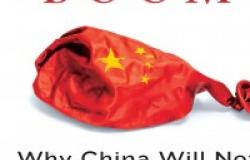The Social and Geopolitical Origins of China’s Rise

The China boom: Why China will not rule the world by Ho-fung Hung. Published 2015 by Columbia University Press.
I read with pleasure the recent book “The China boom: Why China will not rule the world” by Ho-fung Hung. You should not be put off by the silly subtitle (probably added by the publisher to contrast Hung’s book to Martin Jacques’s). The book is much better than its subtitle implies. It gives a historical overview of how China’s economy functioned under Ming and Qing, goes over the well-known themes of how and why capitalists failed to create a coherent class in China (unlike in Europe), and how the paternalistic Qing slowed down that process by often supporting workers in disputes with owners, the very opposite of what capitalist-controlled European states did at the time. I wrote about these themes in my reviews of Arrighi, Jacques, andPomeranz, so I will not go back to them.
There two other interesting things that I find in Hung’s book.
The first is: what is origin of China’s success? It is the mixture of the Asian export-driven policies (with open US markets) combined with Maoist centralization of capital through surplus exploitation of peasantry. For the reasons of paternalism and weakness, the Qing were never able to centralize capital needed for development. The post-Qing (republican) regime also failed in it but, in an era of chaos, let local gentry, merchants and the military be transformed into a number of regional “military-predatory elites” vying with each other for power. China under the Republican regime was like Libya today. If you believe that Libya will soon begin to develop, then you can as well see in those multiple “militaro-predatory” elites of the early Republic a proto-capitalist formation, as some like Pseudoerasmus do. (I had a Twitter discussion on this issue with him.)
China’s rise differs in another way from the general East Asian experience. The flying-geese pattern (Akamatsu) whereby the most developed country gradually abandons less value-added productions to the next in line, and so forth, was upended by China, which started low but gradually took over the top-of-the-line products while not giving up the low-value added. Rather than flying in a orderly flock, China thus, both through its size and fast innovation, changed the model by becoming the hub through which many East Asian products are now exported to the US and Europe. The entire second part of the book is devoted to the interdependence between the US and China (trade surplus and investments in dollar-denominated T-bills) and while it may be, especially now, of significant interest for many I will not review it here.

For me, the second interesting part is what Hung regards as the class base of China’s current regime of political capitalism. This is a topic I deal with in Chapter 3 of my “Capitalism, Alone”. I wish I had read Hung before I completed the chapter because he introduces several interesting elements. Hung, like many others (including me), sees the dominant class to be “politico-capitalist” or in his formulation “politico-entrepreneurial” (p. 91). The “ruling bloc” combines people from the political sphere who benefit from political and economic power of SOEs, and capitalists, mostly from the Southern maritime provinces, who benefit from China’s “export machine”.
Following Michael Pettis, an American professor at Peking University, Hung argues that three fundamental Chinese policies of (i) wage (and consumption) suppression, (ii) cheap yuan, and (iii) financial repression have their origin in this class structure. Wage suppression and depreciated currency are obviously good for Chinese exporters (the new entrepreneurial class). Financial repression, combined with huge trade surpluses generated by the “export machine”, allow the political part of the ruling class to use SOEs for projection of its power domestically, and increasingly, internationally.
There is an additional twist that lovers of history’s convoluted implications would appreciate. Hung argues that the wave of privatizations that increased unemployment by thousands and reduced workers rights in the early- to mid- 1990s was possible only thanks to the repressive post-Tiananmen regime. The pro-democracy students and pro-Maoist workers who decried inequalities in 1989 “succeeded” in unifying different political factions of CCP, afraid of losing power, and made it possible for CCP to launch, after Deng’s “Southern turn”, the most far-reaching privatization and liberalization policies. In Hung’s view such policies would have met with much stronger societal resistance had they been implemented in the more permissive pre-Tiananmen climate.
Hung also explains why wage repression and urban-rural differences in China are, and can be, greater than they were in South Korea and Taiwan at the same level of development. The answer is also somewhat counter-intuitive but no less logical. South Korea and Taiwan had to be more careful and to spread the wealth to the countryside lest they create revolutionary conditions in villages or allow disgruntled rurals to move into cities. They had to be more careful because of proximity of China and the appeal of left-wing, pro-Communist, policies. But China does not have to “fear” the left-wing appeal of any nearby egalitarian power, and can thus pursue much more inegalitarian policies.
Let me finish with a small detail, the book that was clearly written before the last US presidential election (although it was published in 2017), mentions, as a curiosity, on page 1, one “Donald Trump’s…entertaining [sic] bid for presidency in 2012”. The joke is on Hung.
This first appeared on Branko's blog and was reposted with permission.


